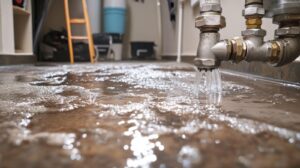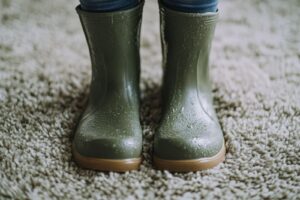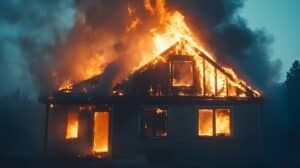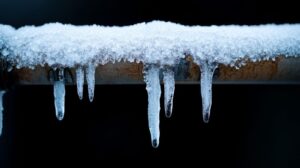Spotting black mold symptoms on skin, like rashes and irritation, is crucial for attacking potential mold infestations and preserving your well-being.
Even if you’ve never dealt with black mold before, the term is enough to bring a sense of urgency and concern. This type of mold is particularly problematic because it poses significant black mold health hazards, like allergies and respiratory problems.
While mold is common in many households, black mold is associated with more severe consequences. Recognizing the signs and symptoms of black mold exposure is necessary for safeguarding your health and keeping your living environment safe. Continue reading to learn more!
What is black mold?
Black mold, or Stachybotrys chartarum, is a fungus that thrives in damp, humid conditions. It’s found indoors and outdoors but becomes a serious concern when growing inside homes and buildings.
This type of mold thrives on materials rich in cellulose, such as paper products, wood, and drywall. Black mold requires warm temperatures and moisture to thrive. It often shows up in damp or otherwise water-damaged areas of the home, like basements, showers, and around windows.
Black mold is black or dark green and has a slimy texture. It releases spores into the air, which is where things get dangerous. When inhaled, these spores cause health problems ranging from a simple cough to more threatening side effects like pneumonia.
How does mold get indoors?
Mold finds its way indoors through several common pathways. Mold spores are tiny and easily travel indoors through open windows and doors, ventilation systems, and even on clothing, shoes, and pets. Once inside, these spores settle on surfaces and wait for the perfect conditions to grow.
Mold needs moisture, warmth, and a food source to thrive. Common sources of indoor moisture include leaks in roofs, windows, or pipes, high humidity levels, and poor ventilation. Areas like bathrooms, kitchens, and basements are especially prone to mold growth due to their tendency to retain dampness. When spores land on these clammy surfaces, they grow and spread easily.
Why is black mold so dangerous?
The danger of black mold lies in the mycotoxins it produces. Mycotoxins are toxic compounds that cause a range of health problems, especially when inhaled over an extended time. These toxins affect different parts of the body, such as the respiratory system, the nervous system, and the skin.
When mold spores interact with the respiratory system, they generate a serious black mold health hazard. Prolonged exposure to black mold can cause chronic bronchitis, asthma, pneumonia, or even attack neurological functions. Memory loss, cognitive impairment, and severe headaches are often associated with extended exposure to black mold.
Black mold symptoms on skin are less common than respiratory or allergic reactions, but they still happen. Those who experience prolonged exposure or have a heightened sensitivity to mold are particularly vulnerable. These symptoms include rashes, hives, scaly patches, blisters, itching, discoloring, and a burning sensation. If symptoms persist or worsen, always seek medical advice as quickly as possible.
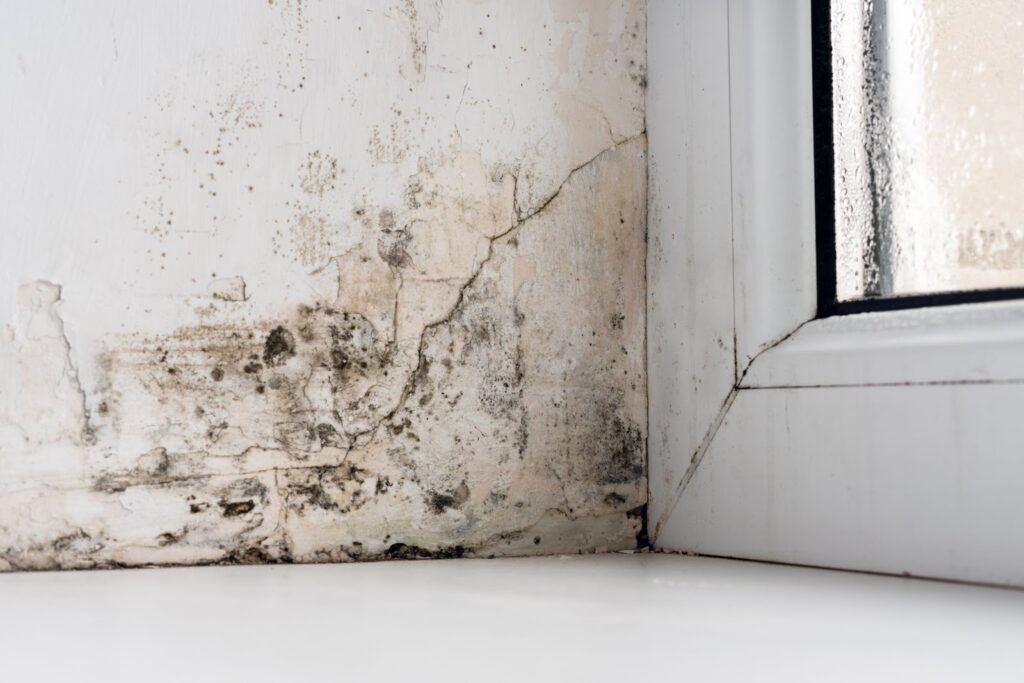
Long-term health effects of black mold
While some symptoms of black mold exposure are immediate, others develop over time. Chronic mold exposure can lead to more severe health issues, highlighting the black mold health hazard.
Respiratory infections
Extended exposure to mold increases the risk of respiratory infections. Conditions like chronic bronchitis and pneumonia become more likely as mold spores irritate and inflame the respiratory tract.
Asthma
Those without previous respiratory issues can develop asthma due to long-term mold exposure. The constant presence of mold spores in the air triggers asthma symptoms and may even lead to chronic breathing difficulties.
Suppressed immune system
Mold exposure weakens the immune system over time, making its victims more susceptible to other illnesses as well. The body’s defense mechanisms are compromised, leaving it less capable of fighting off pathogens.
Physical signs of black mold presence
The best way to protect you and your family against black mold’s wrath is to recognize the warning signs before problems escalate. Here are some common signs of black mold to be aware of:
- Visible mold growth- Black mold looks like black or dark green patches. It usually shows up on walls, ceilings, or other surfaces. It thrives in damp, humid areas, so keep a watchful eye on your bathrooms, kitchen, and basement.
- Musty odor- A musty or earthy smell is often a telltale sign of mold growth. This odor is more noticeable in enclosed areas like the basement or bathroom.
- Water damage- Any signs of water damage, such as discoloration on walls or ceilings, peeling paint, or wallpaper, might also indicate the presence of mold.
- Condensation- Excessive condensation on windows, walls, or pipes creates an ideal environment for mold growth.
Protecting Yourself from Black Mold
Preventing and quickly addressing black mold in your home is vital for defending your health. Here are some steps to take before your mold problems spiral out of control:
Identify and eliminate moisture sources
Since mold thrives in damp environments, it’s essential to identify and combat any sources of moisture right away. This could mean fixing leaks, improving ventilation, or using dehumidifiers in humid areas.
Regular cleaning and maintenance
Keeping up with regular cleaning and maintenance will go a long way in preventing black mold growth. Make it a habit to use mold-killing products on surfaces prone to mold, like under your kitchen sink or near the bathtub.
Also, make sure your home has proper ventilation, especially in those moisture-prone areas. Cracking a window or using exhaust fans is a simple way to help keep the area dry and mold-free.

Professional mold inspection and remediation
If you suspect a mold problem, it’s best to seek professional help. Experts will first identify the extent of the problem and then effectively remove the mold and prevent future growth. These experts make sure every trace of mold is safely and thoroughly eradicated.
How black mold removal professionals help
Dealing with black mold is no small task, so it’s best practice to call in the experts for help. Black mold removal professionals are trained to handle mold problems efficiently and safely, certifying that your home is free from this dangerous health hazard asap.
Assessing moisture sources
One of the first steps in combating mold is to assess the area and identify all sources of moisture. Black mold removal professionals conduct thorough inspections to pinpoint problem areas. This usually includes detecting hidden leaks in plumbing, roofs, or walls that are not easily visible to the untrained eye.
Comprehensive mold inspection
Mold removal pros use expert equipment to conduct detailed inspections. They first identify the type of mold and the extent of the infestation. These inspections often involve air quality testing and surface sampling, which detects mold spores that are not visible to the naked eye.
Safe mold removal and cleanup
Professionals follow stringent safety protocols to remove mold without spreading spores to other areas of your home. They use advanced techniques and equipment, such as HEPA vacuums and air scrubbers, in their process.
Preventing future mold growth
After the mold is removed, professionals take steps to prevent future infestations. They treat affected areas with antimicrobial solutions to inhibit mold growth and outline long-term solutions. These long-term solutions might look like waterproofing the basement, installing vapor barriers, or improving overall home insulation to keep moisture at bay.
Providing peace of mind
Bringing in black mold removal professionals gives you the peace of mind that the problem is tackled the right way. They provide a detailed report of their findings and the steps they took to eliminate the mold. This documentation shows you’ve addressed the issue responsibly, which will come in handy if you sell your home in the future.
Contact Black Diamond Restoration for black mold remediation today!
Now that you’re aware of the dangers of black mold symptoms on skin and the importance of timely action, who will you call if you suspect a mold problem in your home? Addressing black mold health hazards is a Black Diamond Restoration specialty!
Trust our mold removal experts to tackle mold issues with precision and care. We offer comprehensive services for businesses and homeowners, utilizing state-of-the-art technology and a highly skilled team dedicated to exceptional customer service.
Reach out to Black Diamond Restoration to learn more! We are ready to restore your home to a safe and healthy environment. Put Black Diamond Restoration to work for you today!
toto slot



